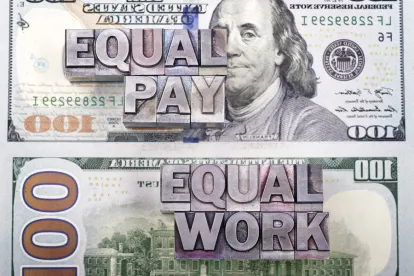The latest effort by the French government to promote gender equality in the workplace introduces a number of proposals including a payroll software to identify wage inequality, transparency obligations imposed on companies to reveal pay-equality results, and detailed procedures to prevent and penalize gender-based violence at work.
The French government announced a series of measures last month to fight against wage inequalities between men and women and combat sexual and gender-based violence at work. Employers’ and employees’ trade-union representatives at the national level have one month to comment on the subject and on the proposals made by the government.
At the end of the consultation, the proposals, possibly completed by the social partners, will be included in the future draft bill "For the Freedom to Choose One's Professional Future" to be presented between April 15 and April 30 by the government. This draft bill will also cover unemployment insurance, vocational training, and apprenticeship.
In particular, the government's roadmap proposes ten actions to end unjustified wage gaps and advance gender equality.
First of all, the existing obligation of means with regard to equal pay would become an obligation of result, starting in 2019 for companies with more than 250 employees and in 2020 for companies with more than 50 employees. According to the French government, the wage gap between women and men is 9%, at equivalent position and age. The government is proposing that companies with at least 50 employees deploy a royalty-free software that is directly integrated within the company payroll software. When this software reveals wage inequality, the company should devote a wage catch-up envelope to women as part of the wage negotiations with trade-union representatives. The company would have three years to ensure compliance, or face up to 1% of the total payroll in sanctions by labor authorities. This penalty could be combined with the financial penalty already imposed on companies with at least 50 employees when they fail to negotiate on gender equality (up to 1% of the total payroll).
The government is also proposing to establish a transparency obligation for companies on their pay equality results. Companies should then publish on their website their overall results in reducing pay gaps between women and men. In addition, staff representatives would have access to data on the subject by job category.
In the particular case of listed companies, their governing bodies would be empowered through the setting up of a deliberation by the Remuneration Committee and the Board of Directors on the results of equal pay and an obligation to annually inform the Board of Directors on gender diversity in the top 100 of the company’s management.
The government is also proposing to profoundly reform the "Equality" label to strengthen its operational efficiency and encourage businesses to obtain it. This label, created in 2005, rewards the exemplary practices of companies in their approach to equality between women and men.
Moreover, based on the observation that 80% of part-time employees are women, the government would like to give all employees who work part-time the same rights on their personal training account as full-time employees.
Currently, the labor authorities operate 1,730 audits per year on the sole subject of professional equality. The government would like the labor authorities to reach a threshold of 7,000 inspections a year.
Lastly, the government plans to make guidance available to companies, professional branches, and inter-professional joint committees to combat gender stereotypes when hiring. It would like each branch to report on its action in terms of professional equality in the workplace in the framework of its annual report and favor the reconciliation of professional life with personal and family life.
With regard to the fight against sexual and gender-based violence at work, the French government has envisaged five actions: prevention, training, information, accompaniment, and punishment.
In terms of prevention, the government plans to assign a preventive role to inter-professional regional joint committees. Labor inspectors, occupational health professionals, shop stewards, staff representatives, and labor tribunal judges would benefit from training on workplace violence to assist them in their missions.
In order to improve information on sexual and gender-based violence in the workplace, the management and human resources departments of large and medium-sized enterprises and small business owners would be made aware of these issues according to modalities still to be defined. In addition, employees should be informed, by any means, in their workplace of the remedies accessible to victims.
Trained and identifiable referents for employees would be set up to assist employees who are victims of sexual or gender-based violence at work. These referents would be chosen among the staff representatives and occupational health professionals. In companies with more than 250 employees, a member of the human resources department would also be a referent.
Finally, in the case of proven facts, the culprits would be sanctioned in proportion to the violence, if necessary by a transfer to another department or site or even a dismissal. The labor authorities would be given the task of guiding the employers who need advice on the appropriate sanction.
In conclusion, more than five bills aiming to promote gender equality in the workplace have been introduced in France since 1983, not to mention laws on sexual harassment and violence. Still, the issue continues to exist, in part because the laws have not been properly enforced. If the newly proposed regulations are approved and better enforced, employers will need to implement tools to monitor the application of the new rules with regard to pay equality and to prevent violence in the workplace: plans of action, training of managers’ and employees’ representatives, and follow up of the measures taken, keeping in mind that the current obligation of means will become an obligation of results.




 />i
/>i

